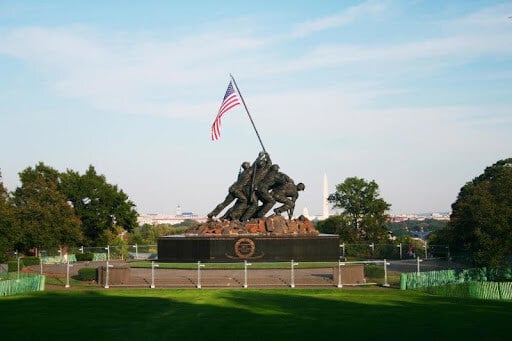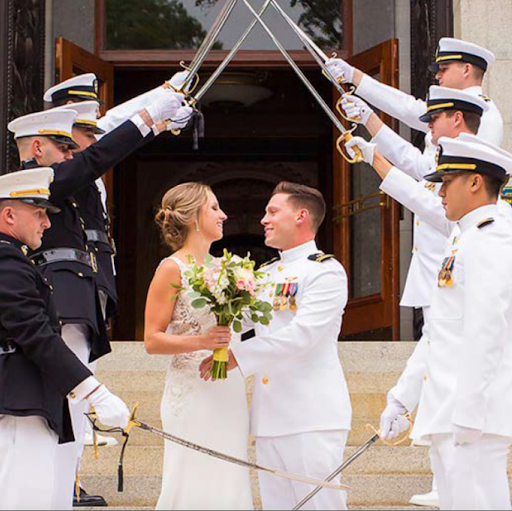For centuries, the stars have guided sailors across uncharted waters, and the tradition of celestial navigation remains alive and well at the U.S. Naval Academy (USNA). Established in 1845, the Academy quickly recognized the importance of teaching midshipmen to navigate by the heavens. By 1854, the USNA had constructed its first observatory, a modest building dedicated to the study of the stars. Over time, the observatory has evolved in both location and purpose, but it remains a key part of the Academy’s legacy and education.
Today, the Naval Academy Observatory stands as a shining beacon of history, innovation, and astronomical exploration.
A Modern Marvel: The Famous Clark Refracting Telescope
The first USNA observatory was built between July 1850 and November 1854, an ambitious project that underscored the Academy’s commitment to astronomy. Originally located near what is now the Zimmerman Bandstand, it featured a drum-shaped observatory dome housing the crown jewel of its collection: the 7.75-inch aperture Clark refracting telescope. Built by the renowned Alvan Clark of Cambridge, Massachusetts, this telescope was considered state-of-the-art for its time, boasting precision craftsmanship and advanced features like a clock-driven German equatorial mount.
The telescope was so revered that it traveled to Des Moines, Iowa, as part of a U.S. Naval Observatory expedition to photograph a total solar eclipse in August 1869. Upon its return, it remained in use until the original observatory was razed in 1908 during a campus overhaul. The Clark Telescope, along with other instruments, was then transferred to the U.S. Naval Observatory in Washington, D.C.
Rebirth of the Observatory
For decades, the USNA was without an observatory. Then, in the 1980s, a chance discovery changed everything. During a visit to the U.S. Naval Observatory, midshipmen learned that the 1857 Clark objective lens was still in storage. This revelation sparked a restoration effort, championed by midshipmen, faculty, and alumni.
The Class of 1941 stepped forward to fund the project as their 50th Graduation Anniversary gift. By June 1991, a new observatory was built at the corner of Bowyer Road and Phythian Road, overlooking College Creek and the Severn River. The refurbished Clark Telescope, complete with a modernized mount and tube, had found its permanent home.
Related: USNA Tours: Visit the Yard Cemetery This Halloween Season
The Observatory Today
The Naval Academy Observatory continues to evolve, blending its historic roots with modern technology. In 2022, the facility underwent a significant upgrade with the installation of a Paramount MEII German equatorial mount. This new mount replaced the aging system, which had been in place for decades. Engineering teams worked tirelessly to modify the telescope pier and install the new drive, ensuring that the observatory remains a functional and reliable teaching tool for the midshipmen.
Professional astronomers in the USNA’s Physics Department lead courses in astronomy and navigation, keeping celestial education at the forefront of the core curriculum. While the Academy does not offer an astronomy major, the observatory plays a vital role in seamanship and navigation training, helping midshipmen understand the fundamentals of celestial navigation.
The observatory also serves as an outreach tool, hosting school groups, scout troops, and the USNA Astronomy Club, whose members engage in a variety of activities, from casual stargazing to advanced projects like sunspot counting, charge-coupled device (CCD) imaging, and variable star photometry. The observatory is an important part of the community.
Related: How to Plan a USNA Field Trip
A Must-See Stop on the Yard
Visitors to the Naval Academy can catch a glimpse of this historic observatory while exploring the Yard. Whether you’re touring the campus, dining at USNA restaurants, or shopping at its stores, every visit supports the Brigade of Midshipmen, helping to fund extracurricular activities like cultural arts, music, theater, and club sports that foster camaraderie and teamwork.
The USNA Observatory itself is more than a Naval Academy building—it’s a testament to the Academy’s historic commitment to blending history, education, and innovation. So, the next time you’re on the Yard, take a moment to appreciate this structure, which celebrates the stars above.
-1.png)









